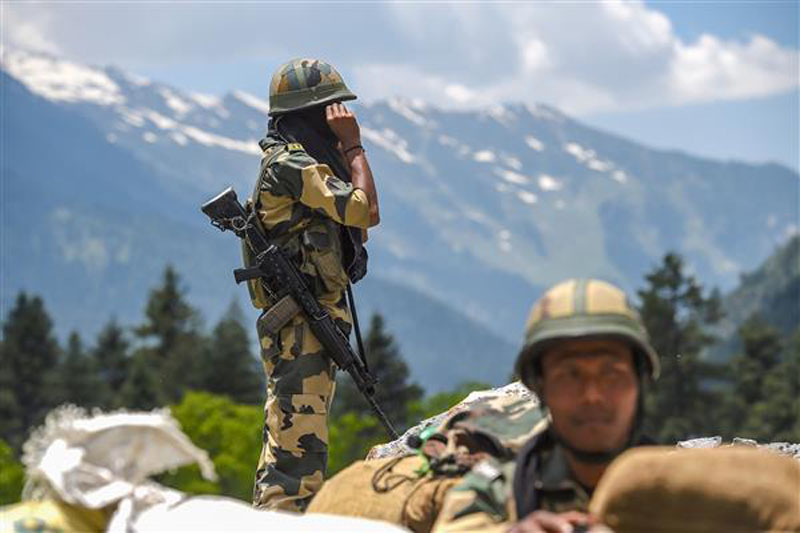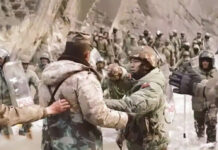
(TibetanReview.net, Jun19’20) – Ten Indian soldiers, including four officers, were on Jun 18 evening handed over by the Chinese who had taken them away during the Jun 15 night attack on the Indian side with deadly improvised weapons of rods wrapped in barbed wire and clubs studded with nails. This followed hectic negotiations between the two sides, including three rounds of talks at the Major General level from Jun 16 to 18, reported indianexpress.com Jun 19. China has played down the seriousness of the border situation.
Later in the same evening, the Indian army issued a statement, saying no soldier was missing, which meant that all the soldiers involved in the clashes had been accounted for, the report said.
The two sides have blamed each other for launching or provoking the clash, which did not involve use of firearms. While the heavily outnumbered Indian suffered 20 deaths, including an officer, and a number of injuries, China has stuck to its known practice of not mentioning casualty numbers. US intelligence and Indian army have put the number of Chinese dead and injured at 35 and at least 45 respectively.
The Jun 16 night clash took place between the LAC (line of actual control) and the junction of Galwan and Shyok rivers to the west. Several of the Indian soldiers were reported to have died due to frostbite after being pushed into the ice-cold river by the Chinese night attackers.
Indian Officers were cited as saying that as part of de-escalation, the two sides had agreed to create a ‘buffer zone’ – a no-man’s land – between the LAC and the junction of Galwan and Shyok rivers. The Indian side was supposed to stay to the west of the river junction and the Chinese to the east of the LAC — to prevent faceoffs.
However, an argument started over the position of Chinese soldiers who had started erecting a new post on the southern bank of Galwan river in this ‘buffer zone’. That was said to have led to the Jun 15 night attack by the Chinese.
Seventy-six Indian soldiers injured during the clash remain in hospital but were expected to join duty within 15 days, reported ndtv.com Jun 19.
The report cited satellite images as indicating a massive Chinese buildup in the Galwan Valley on their side of the LAC within a kilometer of Indian positions.
China said Jun 18 that the situation in China-India border areas was overall stable and controllable.
Accusing India of “triggering fierce physical conflicts and causing casualties,” China’s Foreign Ministry spokesperson Zhao Lijian said at a press briefing that since the incident happened, China and India had made contacts and coordination through diplomatic and military channels, reported China’s official Xinhua news agency Jun 18.
The two sides agreed to handle in a just manner the serious situation caused by the clash, observe the agreement reached during the Commander-level meeting, cool down the situation on the ground as soon as possible, and uphold peace and tranquility of the border areas, Zhao has said.
The Galwan Valley clash was stated to be the biggest confrontation between India and China after their 1967 clashes in Nathu La when India lost around 80 soldiers while the number of dead on the Chinese side was over 300.





